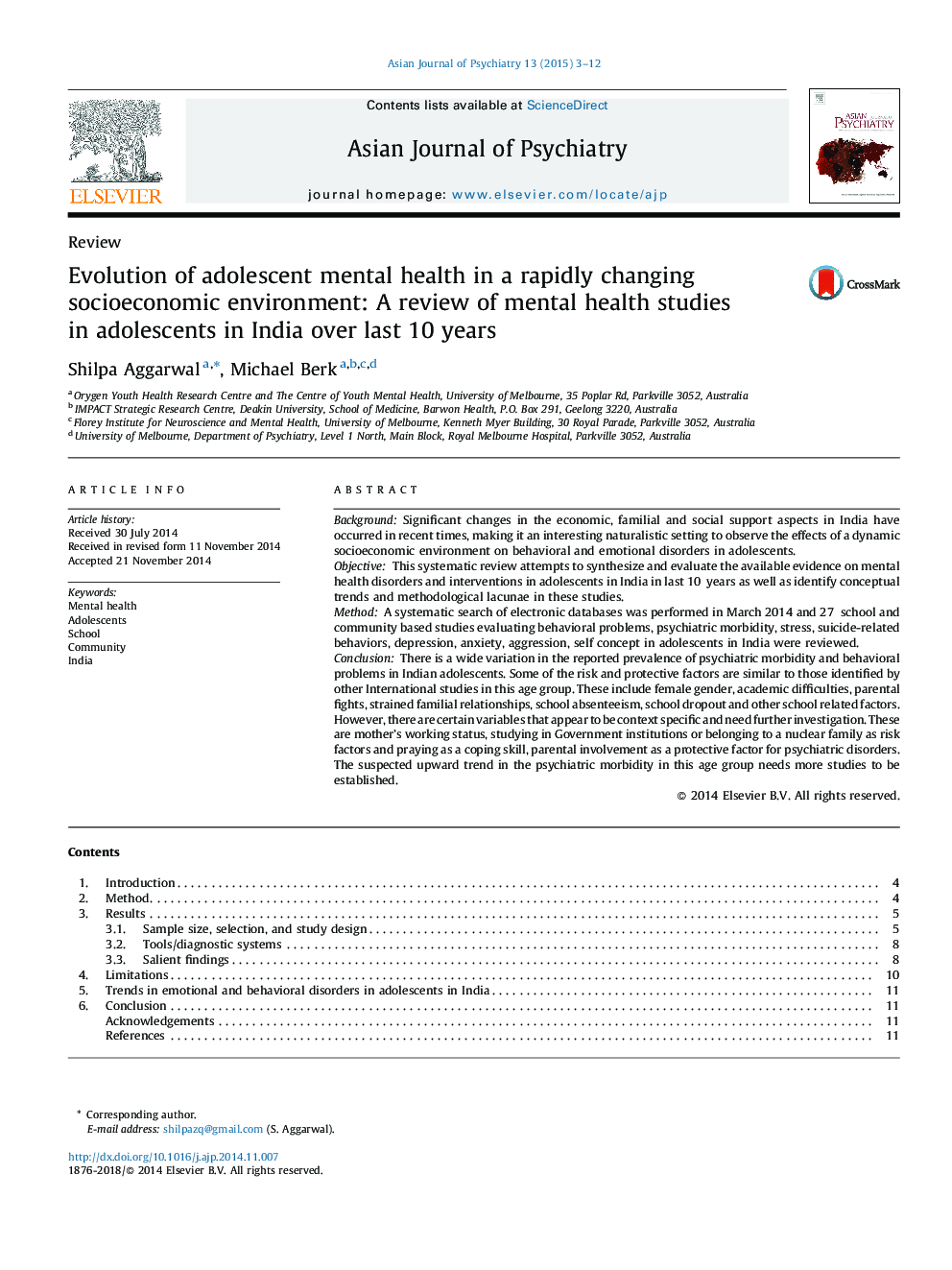| Article ID | Journal | Published Year | Pages | File Type |
|---|---|---|---|---|
| 316790 | Asian Journal of Psychiatry | 2015 | 10 Pages |
•Systematic review of mental health studies in Indian adolescents in last 10 years.•Female gender, academic difficulties, school absenteeism are risk factors.•Parental fights and strained familial relationships are additional risk factors.•Interventions using local resources and terminology were successful.•More studies are needed to establish time trends in psychiatric morbidity.
BackgroundSignificant changes in the economic, familial and social support aspects in India have occurred in recent times, making it an interesting naturalistic setting to observe the effects of a dynamic socioeconomic environment on behavioral and emotional disorders in adolescents.ObjectiveThis systematic review attempts to synthesize and evaluate the available evidence on mental health disorders and interventions in adolescents in India in last 10 years as well as identify conceptual trends and methodological lacunae in these studies.MethodA systematic search of electronic databases was performed in March 2014 and 27 school and community based studies evaluating behavioral problems, psychiatric morbidity, stress, suicide-related behaviors, depression, anxiety, aggression, self concept in adolescents in India were reviewed.ConclusionThere is a wide variation in the reported prevalence of psychiatric morbidity and behavioral problems in Indian adolescents. Some of the risk and protective factors are similar to those identified by other International studies in this age group. These include female gender, academic difficulties, parental fights, strained familial relationships, school absenteeism, school dropout and other school related factors. However, there are certain variables that appear to be context specific and need further investigation. These are mother's working status, studying in Government institutions or belonging to a nuclear family as risk factors and praying as a coping skill, parental involvement as a protective factor for psychiatric disorders. The suspected upward trend in the psychiatric morbidity in this age group needs more studies to be established.
